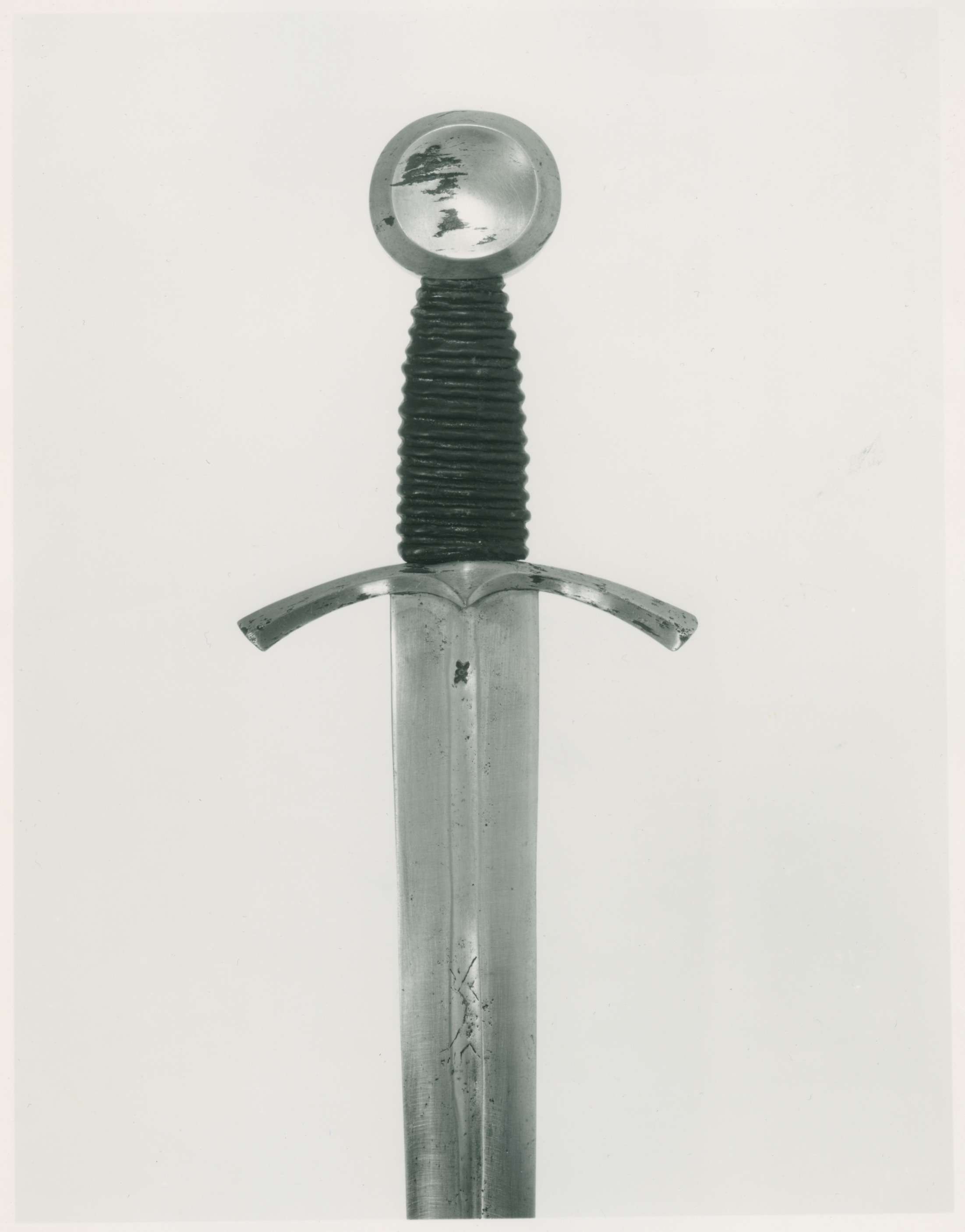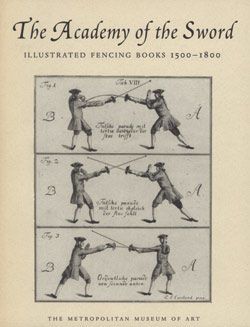Sword
Western European (possibly Italian)
Not on view
With its simple cruciform hilt, this sword is representative of the knightly sword of the Middle Ages; its basic shape did not change significantly between 1200 and 1500. The large discoidal pommel served as a counterweight to the double-edged blade and gave the fighter full mastery of a perfectly balanced weapon. The slightly down-curved quillons of the guard not only made the blocking of an enemy's blow easier, they were particularly important for greater ease of handling the sword on horseback; they came into fashion about 1300. The double-edged blade has a rounded tip, indicating that it was designed primarily for slashing, though it could be used for a thrust.
The "running wolf" mark inlaid with copper on one side of the blade was the guild mark of the renowned swordsmiths of Passau, a small town situated on the Danube at its confluence with the river Inn, on the border between Austria and Germany. The town's name derives from a unit of the Roman army, the IX cohors Batavorum, which was garrisoned there for almost three hundred years, and the wolf in the city's arms is thus probably descended from the she-wolf, emblem of Rome. Mines in the Austrian Alps not far from Passau yield an iron ore of such quality that Passau swords became widely famous, and the "running wolf" was a much coveted (and occasionally pirated) mark. The Passau swordsmiths, in the remarkable feat of public relations, managed to convince their customers that their wolf blades had magical properties––they were even thought to make their owners bulletproof! The other mark on this blade is the personal mark of an unknown armorer; because of its shape it is called "the mill-rind," the metal mounting in the center of a millstone or a grinding wheel. (In the Metropolitan Museum's collection there is a second blade with the same marks––"mill-rind" and "running wolf"––that has been fitted into a North African hilt, and was picked up on the battlefield of Omdurman, during the Mahdi uprising in 1898, an indication of how much a fine sword blade could have been treasured, and for how long it could have been in active use.)
Though this sword is said to have been found in the river Vendée in France (the deep corrosion marks on pommel and guard testify to its excavated condition; the grip would have disintegrated and is therefore replaced by a modern restoration), there is an almost identical sword shown in a portrait of Federigo da Montefeltro, Duke of Urbino, about 1475, by Pedro Berruguete, in the Ducal Palace in Urbino. This indicates how universally widespread this simple hilt shape must have been.
Due to rights restrictions, this image cannot be enlarged, viewed at full screen, or downloaded.
This artwork is meant to be viewed from right to left. Scroll left to view more.






